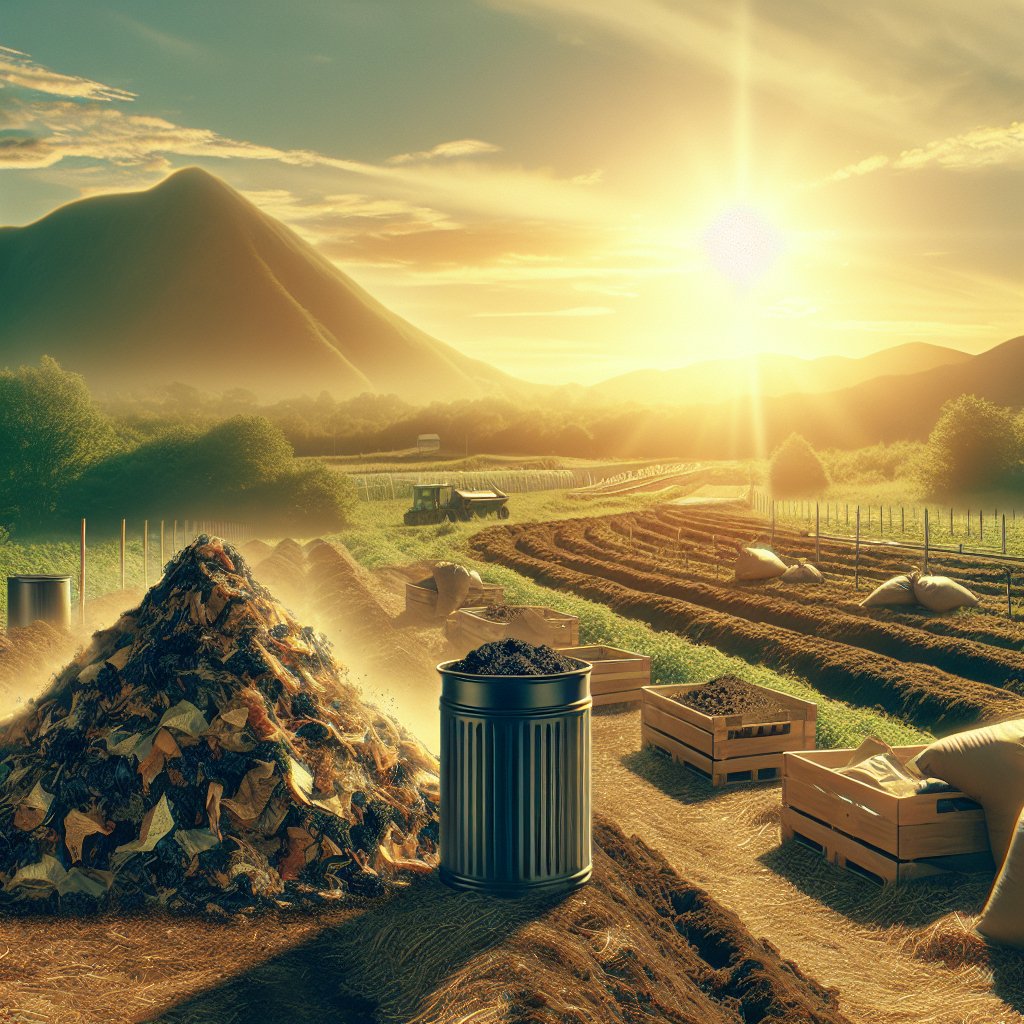
Increasing soil organic matter is a crucial aspect of sustainable agriculture, and composting is one of the most effective methods to achieve this goal. By enhancing soil fertility, structure, and water retention, compost not only boosts crop yields but also contributes to environmental conservation. This article delves into the various strategies for increasing soil organic matter using compost, providing practical tips and insights for farmers and gardeners alike.
Understanding the Importance of Soil Organic Matter
Soil organic matter (SOM) is a vital component of healthy soil, consisting of decomposed plant and animal residues, living soil organisms, and substances synthesized by soil organisms. It plays a significant role in maintaining soil health by improving its physical, chemical, and biological properties. SOM enhances soil structure, increases water retention, and provides essential nutrients for plant growth. Moreover, it acts as a carbon sink, helping to mitigate climate change by sequestering atmospheric carbon dioxide.
Compost, a natural soil amendment, is rich in organic matter and nutrients. It is produced through the controlled decomposition of organic materials such as kitchen scraps, yard waste, and manure. When added to soil, compost increases SOM levels, thereby improving soil fertility and productivity. Understanding the benefits of SOM and the role of compost in enhancing it is the first step towards sustainable soil management.
Composting Techniques for Optimal Soil Health
To effectively increase soil organic matter with compost, it is essential to employ proper composting techniques. The following sections outline key strategies for creating high-quality compost and incorporating it into the soil.
Choosing the Right Materials
The quality of compost depends largely on the materials used in its production. A balanced mix of green and brown materials is crucial for successful composting. Green materials, such as grass clippings, vegetable scraps, and coffee grounds, are rich in nitrogen, while brown materials, like dried leaves, straw, and wood chips, provide carbon. A carbon-to-nitrogen ratio of approximately 30:1 is ideal for efficient decomposition.
It is important to avoid materials that can introduce pathogens or toxins into the compost, such as meat, dairy products, and diseased plants. Additionally, materials treated with pesticides or herbicides should be excluded to prevent contamination of the compost and, subsequently, the soil.
Maintaining the Compost Pile
Proper maintenance of the compost pile is essential for producing high-quality compost. Key factors to consider include:
- Aeration: Oxygen is necessary for the aerobic microorganisms that decompose organic matter. Regularly turning the compost pile helps maintain adequate aeration, preventing anaerobic conditions that can lead to foul odors and slow decomposition.
- Moisture: The compost pile should be kept moist but not waterlogged. A moisture content of about 50-60% is ideal. If the pile is too dry, decomposition will slow down; if too wet, it may become anaerobic.
- Temperature: Composting is most efficient at temperatures between 130°F and 160°F (55°C to 70°C). High temperatures help kill pathogens and weed seeds, ensuring the compost is safe for use. Monitoring the temperature and adjusting the pile as needed can optimize the composting process.
Incorporating Compost into the Soil
Once the compost is ready, it can be incorporated into the soil to increase organic matter levels. The following practices can help maximize the benefits of compost application:
- Timing: Applying compost at the right time is crucial for its effectiveness. It is best to add compost in the fall or early spring, allowing it to integrate with the soil before planting.
- Application Rate: The amount of compost needed depends on the existing soil conditions and the specific crop requirements. A general guideline is to apply 1-3 inches of compost and mix it into the top 6-12 inches of soil.
- Mulching: Using compost as a mulch can help retain soil moisture, suppress weeds, and gradually add organic matter to the soil as it breaks down.
Benefits of Increased Soil Organic Matter
Enhancing soil organic matter through composting offers numerous benefits for both the environment and agricultural productivity. Some of the key advantages include:
- Improved Soil Structure: SOM helps bind soil particles together, creating a crumbly texture that improves aeration and root penetration.
- Enhanced Water Retention: Organic matter increases the soil’s ability to retain water, reducing the need for irrigation and helping plants withstand drought conditions.
- Nutrient Supply: Compost provides a slow-release source of essential nutrients, reducing the need for synthetic fertilizers and promoting sustainable farming practices.
- Carbon Sequestration: By increasing SOM, composting helps capture atmospheric carbon dioxide, contributing to climate change mitigation.
Challenges and Considerations
While composting is an effective method for increasing soil organic matter, it is not without challenges. Farmers and gardeners must consider factors such as:
- Labor and Time: Composting requires regular monitoring and maintenance, which can be labor-intensive and time-consuming.
- Space Requirements: Adequate space is needed to accommodate compost piles, which may be a limitation for small-scale operations.
- Quality Control: Ensuring the compost is free from contaminants and pathogens is crucial for its safe use in agriculture.
Despite these challenges, the long-term benefits of increased soil organic matter make composting a worthwhile investment for sustainable agriculture.
Conclusion
Increasing soil organic matter with compost is a sustainable and effective strategy for enhancing soil health and agricultural productivity. By understanding the importance of SOM, employing proper composting techniques, and addressing potential challenges, farmers and gardeners can improve their soil’s fertility, structure, and resilience. As the demand for sustainable farming practices grows, composting will continue to play a vital role in promoting environmental conservation and food security.

